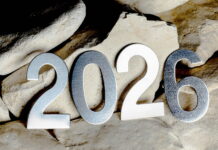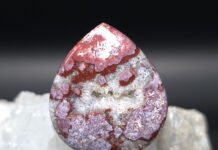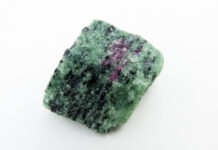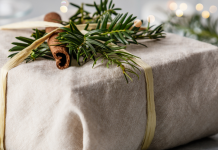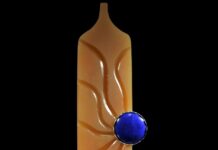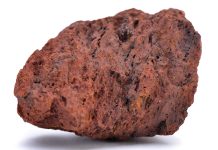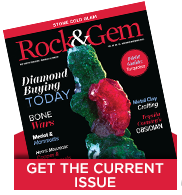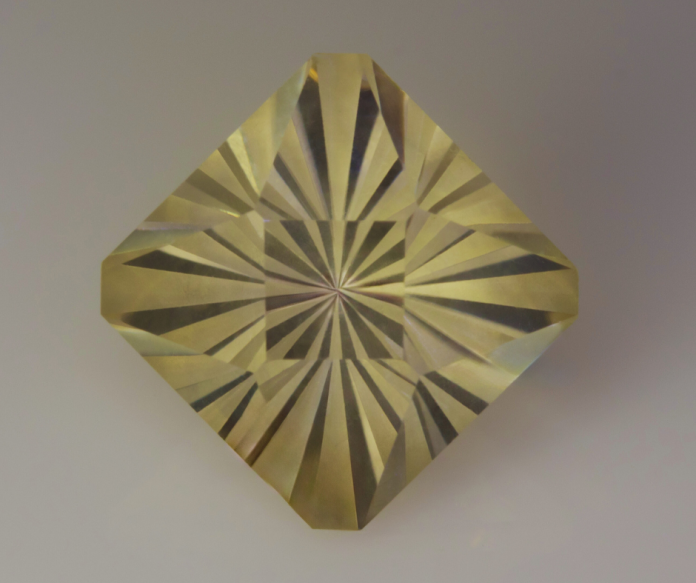
Oregon Sunstone inspired faceter Jeff Rhonemus to create his original Spellbound design, a simple yet striking pattern born from a 2019 cutting job. Rhonemus, who learned faceting in a six-week course taught by the late Jerry Call in 2007, found that simplifying designs often produced greater beauty. In his words, “More facets don’t mean more sparkle or interest.” Spellbound’s clean geometry and clever use of contrast make it a versatile pattern for many shapes—from rounds to squares and trillions—that enhances even pale or less saturated rough.
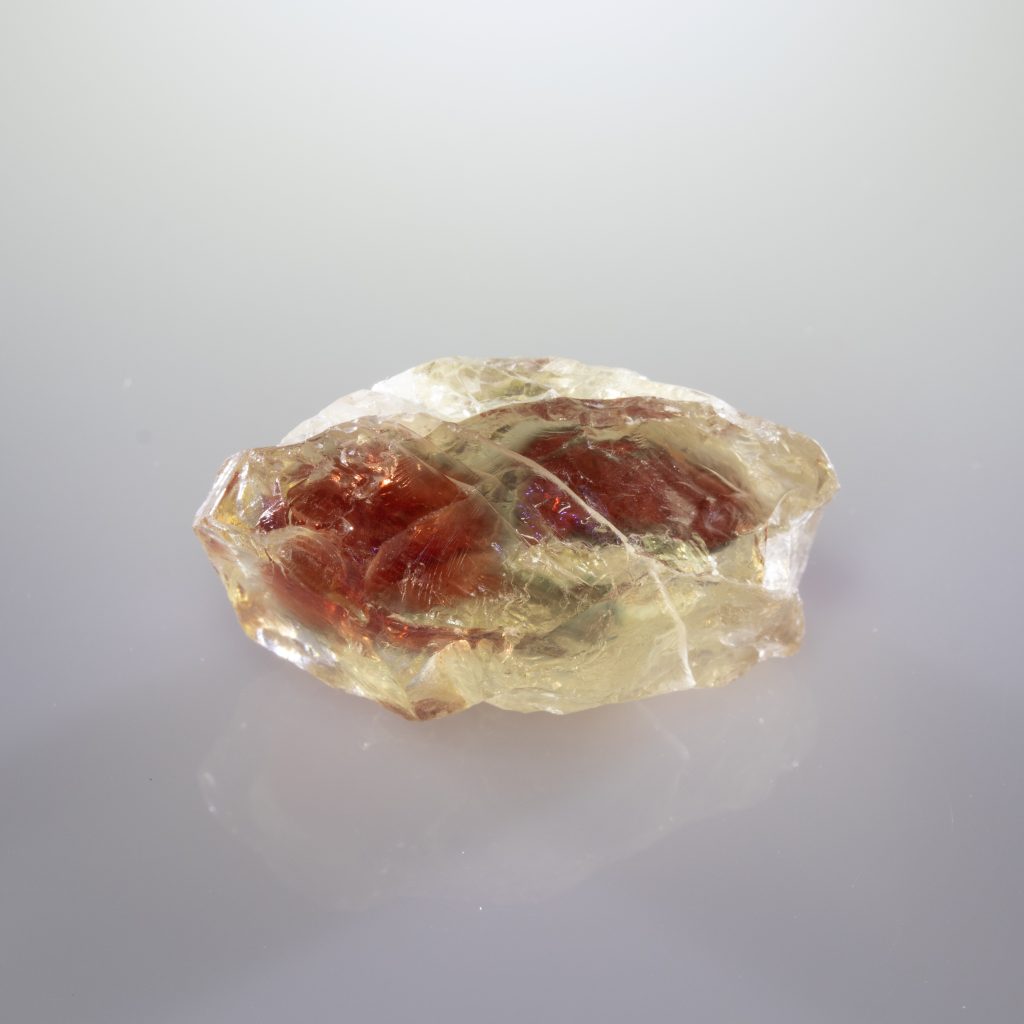
Oregon Sunstone Faceting and the Art of Frosting
The magic in the design lies in the alternating polished or unpolished facets and frosted facets on the pavilion. Frosting is a design element used in modern faceting and can serve two purposes.
- Interest & Intrigue: It forces individual facets to stand out because of the contrast between polished and frosted, or unpolished, facets. Some patterns use frosted facets on the crown to create a recognizable picture.
- Distraction: Frosting can be an intentional choice based on characteristics of the rough. If you’re working with a stone that has some inclusions, frosted facets can distract the eye and mask them. By placing frosted facets, you are forcing the light return to blur and not sparkle the way you would see with a fully polished gem.
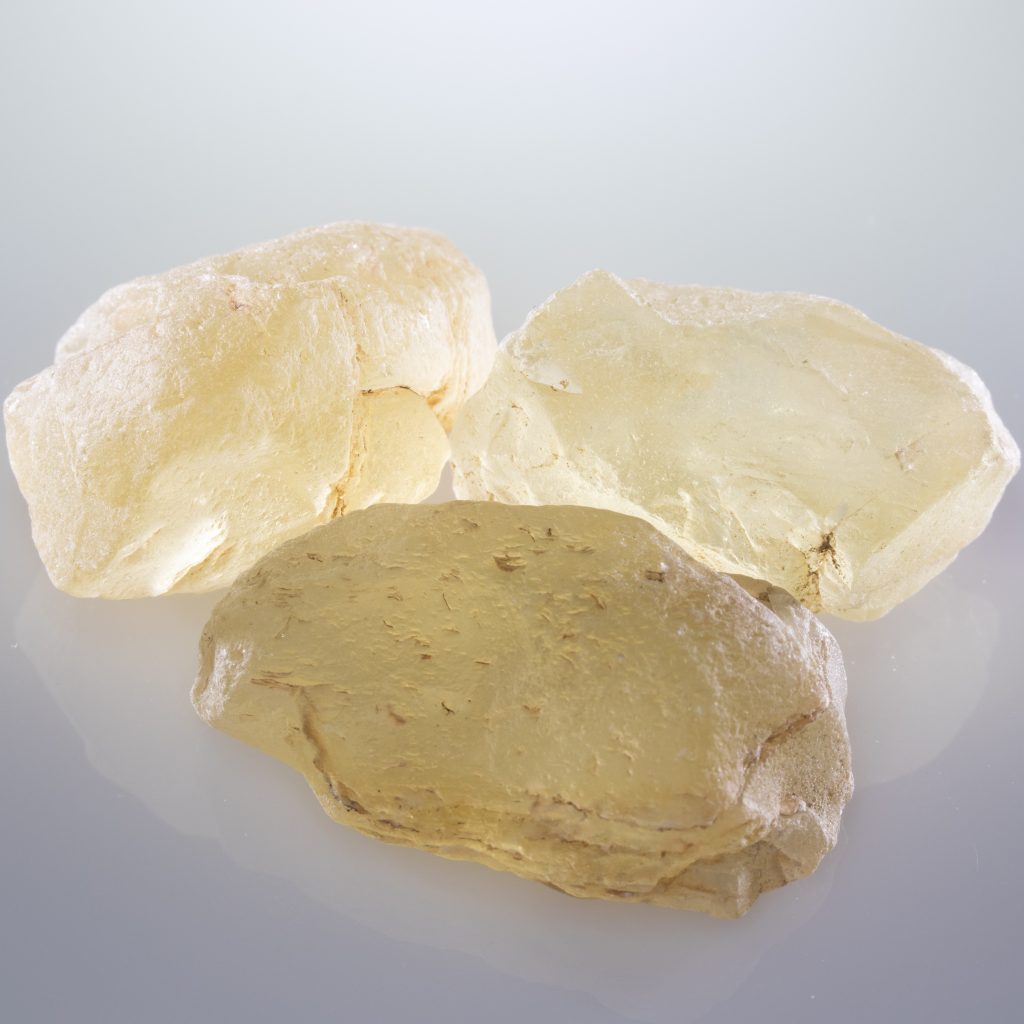
How to Cut the Spellbound Faceting Design
This pattern is straightforward to cut and is a great introduction to adding frosted facets to your designs. The question is, when do you add the frosting? Because this frosting is of entire facets (versus edges of facets), my preferred method is to cut the stone up through pre-polish on all facets. I’ve found that using a worn-out 600 or 1200 grit leaves a nice finish and also avoids the pits or scratches that frosting with a rougher grit can create. Until you have a feel for how the facets frost/move, it is best to keep your frosting lap stationary and gently rub the stone on the lap. The crown is straightforward, and it’s worth noting that to achieve the desired visual effect, you need to float your table. The design is most effective when the table is kept small.
Varieties of Oregon Sunstone for Faceting
Champagne sunstone was chosen for faceting this design; however, Oregon sunstone comes in several varieties, making it a wonderful gemstone to explore.
The gemstone is a feldspar, which can be found with or without copper inclusions. The copper inclusions affect the color and clarity of the rough and finished gemstone. Yellow and champagne colors have minimal copper. There are also green and red colors of sunstone based on the copper inclusions. Occasionally, you can find a rare blue color. The red, green and blue Oregon sunstones command a higher price than the clear yellow and champagne sunstones.
Sometimes, you can have stones that will have a mix of two colors. These dual-color gemstones can be beautiful when faceted; however, it is best to avoid radiant pavilions, which will blend the colors into a brown.
There is also a type of sunstone with schiller inclusions. Schiller is made by copper platelets that give the gemstone a shimmering look. The schiller in the gemstone will affect the clarity and light return, but it will also scatter the light and give a beautiful sheen.
Whatever color gemstone you choose, Spellbound will be a perfect design for Oregon Sunstone.
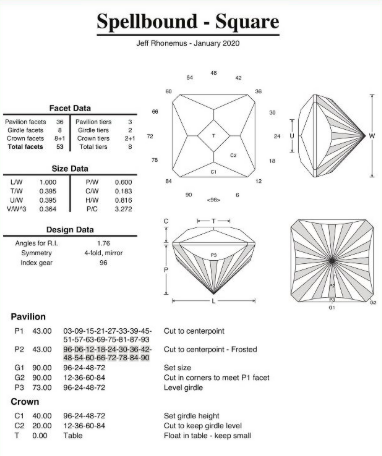 |
This story about faceting Oregon sunstone with the spellbound design was written for Rock & Gem magazine. Click here to subscribe. Story by Mark Oros and Maggie Klinedinst.


